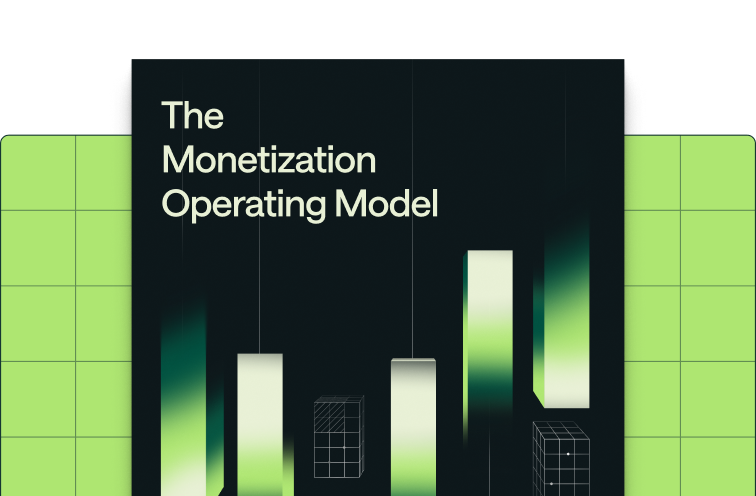Share
Overview
Metronome is the real-time monetization infrastructure that powers usage-based pricing for modern software companies. We help teams define, measure, and monetize the value they deliver — whether through seats, usage, credits, or outcomes.
As AI continues to reshape software, pricing has become a board-level concern. Teams are grappling with how to monetize the costs of real-time models, communicate their value, and adapt legacy billing systems to support hybrid pricing. At Metronome, we sit at the intersection of product, GTM, and finance, and increasingly, we’re seeing that pricing is no longer just a monetization tactic. It’s become a core business system.
To better understand this shift, Metronome interviewed leaders across pricing, product, and operations at some of the most forward-thinking SaaS companies. This field report captures those firsthand insights and complements them with secondary research from top AI-native startups. We clearly separate Interview Insights from Research Insights to highlight where patterns are rooted in direct operating experience and where external benchmarking reveals additional opportunities.
Our goal: to help SaaS companies build monetization systems that are not only technically sound, but also strategically aligned with how AI is changing the way software is sold.
1. AI monetization is a C-level imperative, and usage-based pricing follows by necessity.
Interview insights
At every company interviewed, AI product development was not a grassroots initiative. It was pushed from the CEO or board level, often with urgency. The resulting shift to usage-based or hybrid pricing models wasn’t always driven by strategy; it was a defensive move to deal with real, variable costs.
Usage pricing, in this context, is not just about value alignment. It’s about managing financial exposure.
What we heard:
“We’re not monetizing AI to juice revenue. We’re monetizing to avoid eating $10k of costs on a $500 plan.”
— CFO, data infrastructure company
“The product team wanted to include AI features in the core plan. Finance said: ‘Not unless you want to blow up margins.’ ”
— Pricing owner, enterprise collaboration platform
“Seat overages are foregone revenue. AI overages are real money we have to eat.”
— Head of revenue ops, dev tools company
Research insights
- AI-native startups like Perplexity and Typeface are reaching $5–10M ARR faster than prior SaaS generations, driven by enterprise demand and aggressive monetization.
- In 2025, AI spend has “graduated” to compete with traditional software spend, meaning enterprise sales cycles, procurement rigor, and ROI scrutiny are now the new normal, according to Saastr.
- OpenAI, Anthropic, and Cohere all price by consumption (tokens), but enterprise buyers frequently negotiate committed-use deals to gain predictability.
- AI apps like Jasper, Notion AI, and Fireflies.ai reflect this tension with flat-rate add-ons or seat-based AI plans designed to monetize without introducing billing anxiety.
Takeaway: Companies that execute best treat pricing not as a downstream tweak, but as a strategic risk-sharing mechanism, aligning AI cost volatility with customer value and financial accountability.
2. Most teams start with cost-plus credit models, but it’s a transitional structure.
Interview insights
Most teams defaulted to cost-plus credit systems: credits are allocated, consumed based on input/output size, and priced with a standard markup (often 30–50%). But few companies tied credits to a clear customer value story. Most admitted it was a workaround, not a long-term answer.
Why it happens:
- Cost data is known; value is not.
- LLM billing is volatile; credits normalize it.
- Systems aren’t ready to meter granular activity.
What we heard:
“We don’t love credits, but we didn’t have time to define outcomes. This was the fastest way to ship.”
— Head of product monetization, horizontal SaaS vendor
“Our finance team likes it. Our customers don’t know what a credit does.”
— GTM lead, productivity tool
“Credits gave us breathing room while we figured out the real value metric. But they’re not intuitive to buyers.”
— Director of monetization, enterprise productivity company
Research insights
- Most enterprise AI deals in 2025 still rely on usage-based or hybrid pricing models. Truly outcome-based pricing remains rare, as many enterprise buyers are still uncomfortable with tying spend directly to outputs.
- AI startups are evolving pricing from per-agent to credits-per-task, and in some cases, ultimately to outcome-based models as product maturity and customer trust deepen.
- Fireflies.ai and Synthesia price based on output units such as meeting minutes and video minutes, making value tangible and spend predictable without exposing customers to model-level complexity.
- Decagon prices AI agents either per conversation or per resolution, with most customers preferring the transparency and simplicity of per-conversation billing.
Takeaway: Credits are a valuable transitional architecture, particularly for teams still iterating on pricing, but durable pricing strategies eventually anchor to value drivers that customers can understand and forecast.
3. Customer anxiety over predictability is the biggest barrier to adoption.
Interview insights
Every team flagged one blocker above all others: customer anxiety about unpredictable costs. Buyers don’t understand credit burn. Admins can’t forecast spend. End users don’t know which actions will incur charges. This leads to hesitation, not adoption.
Examples:
- Users don’t use credits because they don’t know how fast they’ll burn.
- Enterprise buyers push back on AI line items unless they’re flat-rate or capped.
- Sales teams stall because they can’t confidently say what a credit pack “should” cost.
What we heard:
“Usage stopped not because of price, but because admins didn’t trust they’d stay in budget.”
— Head of self-serve monetization, product-led SaaS company
“It’s not about the unit economics. It’s about buyer confidence in total exposure.”
— Pricing strategist, enterprise DevOps vendor
“We saw customers actively avoid using AI features even when free credits were included — they were afraid they’d get locked into something unpredictable.”
— Director of self-serve business, collaboration platform
Research insights
- Writer plans to charge a fixed platform fee with a generous monthly token allowance, providing enterprises enough buffer to experiment without fear of surprise bills, a critical factor in landing large deals.
- Intercom offers annual credit buckets and optional outcome-based pricing (“resolutions” vs. “conversations”) so enterprise buyers can choose the model they trust most.
- Intercom also offers generous or extendable free AI trials that allow customers to estimate usage patterns before committing, helping to reduce adoption anxiety and build trust in credit-based pricing.
- OpenAI’s soft and hard usage limits allow customers to proactively set guardrails, protecting themselves from unexpected API bills — a practice mirrored by Hugging Face’s usage cap tools.
Takeaway: Predictability, not price point, drives enterprise adoption. Companies that give buyers clear expectations (via caps, rollovers, or flat rates) unlock usage and expansion, even if the unit economics remain premium.
4. UBP reveals billing fragmentation and forces re-architecture.
Interview insights
Hybrid usage-based pricing doesn’t just challenge GTM teams — it breaks existing billing systems. Most companies run separate PLG (Stripe) and SLG (CPQ + in-house billing + ERP) stacks. Neither supports usage pricing cleanly. As a result, pricing flexibility is limited by billing capability.
Common failure points:
- No system to connect usage events to customers across plans
- Homegrown meters that no one can audit or explain
- Billing logic is duplicated across GTM, finance, and product
What we heard:
“Our entire AI pricing logic lives in product code. Finance sees a number in Looker once a month. No one can explain how it got there.”
— Finance leader, PLG-first SaaS platform
“My biggest challenge is time to market. So like actually building out SKUs, actually being ready to experiment in a way that's going to be tracked and meaningful.”
— Director of monetization, productivity platform
"The enterprise stack (Salesforce, CPQ, Netsuite) has significant tech debt. As a result, leadership is fine with running things in spreadsheets for now because some of these experiments may not be successful.”
— Pricing strategy lead, enterprise software company
Research insights
Many Metronome customers start by solving billing for sales-led contracts, where complexity around credit management, pricing overrides, and revenue recognition is most acute. Rather than ripping out their entire billing stack overnight, they adopt Metronome as a sidecar architecture, purpose-built to handle usage-based commit contracts alongside existing systems.
Over time, they expand Metronome’s footprint by:
- Mapping commit terms directly from CPQ into billing
- Building unified credit ledgers that spans SLG and PLG, enabling reliable revenue recognition
- Routing PLG usage into the same infrastructure to unblock real-time cost visibility, threshold billing, and auto-recharges
- Consolidating the billing layer to create a single source of truth for pricing, usage, and spend data
This phased approach helps teams gradually consolidate billing logic, improve auditability, and eliminate redundant code across product, finance, and GTM.
Takeaway: The transition to usage-based AI pricing often requires rethinking billing as a shared internal platform — one that can ingest events, price dynamically, and unify quote-to-cash across PLG and SLG. Without this, pricing strategy is throttled by system gaps.
5. Sales and success teams need more than a price. They need a narrative.
Interview insights
Most sales teams are not trained to sell usage. They’re used to discounting seats. AI monetization introduces new concepts: metered billing, outcome-based metrics, overage forgiveness, and commit planning. Without enablement, reps flinch — or oversimplify.
Observed gaps:
- Reps can’t forecast usage, so they sell flat rates by default.
- Buyers ask for value explanations; reps revert to “it’s like AWS.”
- No tooling exists to show real-time credit burn or ROI impact.
What we heard:
“We had to teach reps how to talk about ‘credits per outcome’ — not just features per plan.”
— Sales enablement lead, vertical SaaS company
“We stopped saying ‘credit pricing.’ We say, ‘Here’s what a resolution would cost if a human did it — we’re cheaper.’ That lands.”
— GTM strategist, support automation platform
“Sales asked, ‘How many credits does a customer need?’ We had no idea. We just comped it.”
— RevOps head, workflow automation company
Research insights
- While AI pricing presents new challenges, teams can learn from mature usage-native companies like Snowflake and Datadog, which have spent years building sales motions, forecasting tools, and customer education strategies around variable pricing.
- Successful sales of usage-based products require reps to understand how product features create value. Sam Lee notes that product fluency is essential, especially in AI, to confidently connect usage to outcomes.
- Monte Carlo encourages its sales team to “right-size” deals by offering conservative initial commit tiers and driving expansion through real usage. This aligns incentives with long-term customer success and reduces friction from overcommitting too early.
- Anthropic and OpenAI surface granular usage dashboards for teams to model ROI, often alongside usage caps and optional commits for predictability.
Takeaway: Successful AI monetization requires more than pricing design. It requires enablement, storytelling, and buyer education. Sales teams need tools that connect usage to outcomes, not just invoices.
Closing thoughts: Pricing is now product strategy
AI monetization isn’t a bolt-on. It reshapes architecture, GTM motion, sales comp, and customer experience. From the companies we interviewed and researched, one pattern stands out: the best teams treat pricing as a system that evolves with product maturity, scales with customer value, and reinforces trust.
Summary patterns across both interviews and research:
- Credits are useful scaffolding but not long-term value anchors.
- Predictability beats precision. Flat-rate AI often wins over granular pricing.
- Value metrics must be explainable (e.g., resolutions, videos, rep productivity).
- Billing ownership needs to unify product, finance, and GTM.
- Narratives, not just models, win deals. The value story behind pricing matters as much as the structure.











